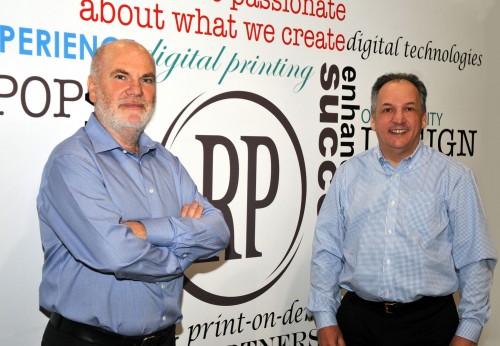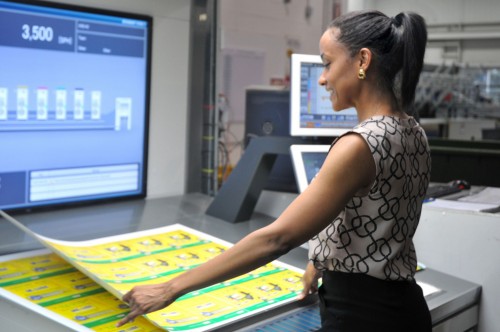
Pictured left to right are George Mazzaferro, founder and CEO, and Marc Fortier, president. Photos courtesy RP Graphics Group
By Peter Saunders
In recent years, there has been much industry talk about opportunities for commercial printing firms to achieve new revenue streams by adding wide-format inkjet presses to their production departments. Few Canadian companies have been as successful in this respect as RP Graphics Group in Mississauga, Ont., and it has taken much more than simply the acquisition of new machines.
Commercialized and digitized
Roma Printing was founded in 1958 as a small, two-person shop on Toronto’s Eglinton Avenue. When current CEO George Mazzaferro and two business partners bought the company from its retiring owners in 1978, the shop was using a Heidelberg Windmill press to produce small-format output, including invoices and wedding invitations, primarily for the Italian-Canadian community.
Mazzaferro—then just 20 years old, but with eight years’ experience and a technical school education in the printing industry—began to lead an expansion into broader commercial production capabilities. His partners left the business in the early 1980s.
The company was renamed RP Graphics Group in 1991 and became an early adopter of digital printing technologies, including a Heidelberg Quickmaster Direct Imaging (DI) press in 1995, which allowed the company to transfer images and text onto a variety of paper stocks without needing camera work, film development, assembly and other traditional intermediate steps.
“Back in the ‘90s, we were the first printer in Canada to integrate digital capabilities as part of our product offering,” says Mazzaferro.
The business moved into its current 5,574-m2 (60,000-sf) building in 2005.

As RP Graphics specializes in promotional marketing for retailers and other clients, it has expanded its wide-format division.
Thinking big
In 2007, RP entered the large-format printing market by establishing a new department with its first Inca Digital Spyder ultraviolet-curing (UV-curing) flatbed press from Fujifilm Canada Graphic Systems. A second followed in 2008 with white ink, along with a Zund digital cutter. These were accompanied by expanded finishing and kitting services in 2010.
“Large-format was a perfect fit for us,” says Mazzaferro. “One of our major customers, a retailer carrying multiple brands, was already buying large-format point-of-purchase (POP) graphics from another vendor. I knew we could sell to them and I saw this as an opportunity to grow. We ended up doubling our sales to that customer.”
RP had already built a reputation for highly customized work, which helped ease the transition of adding POP graphics to its diversified portfolio.
“We never put all of our eggs in one basket,” says Mazzaferro. “As we saw a decline in the litho world, with a lot of book printing moving overseas, POP made sense: when customers need it, they need it tomorrow. And as our salespeople learned more about these graphics, they managed to raise customer demand.”





